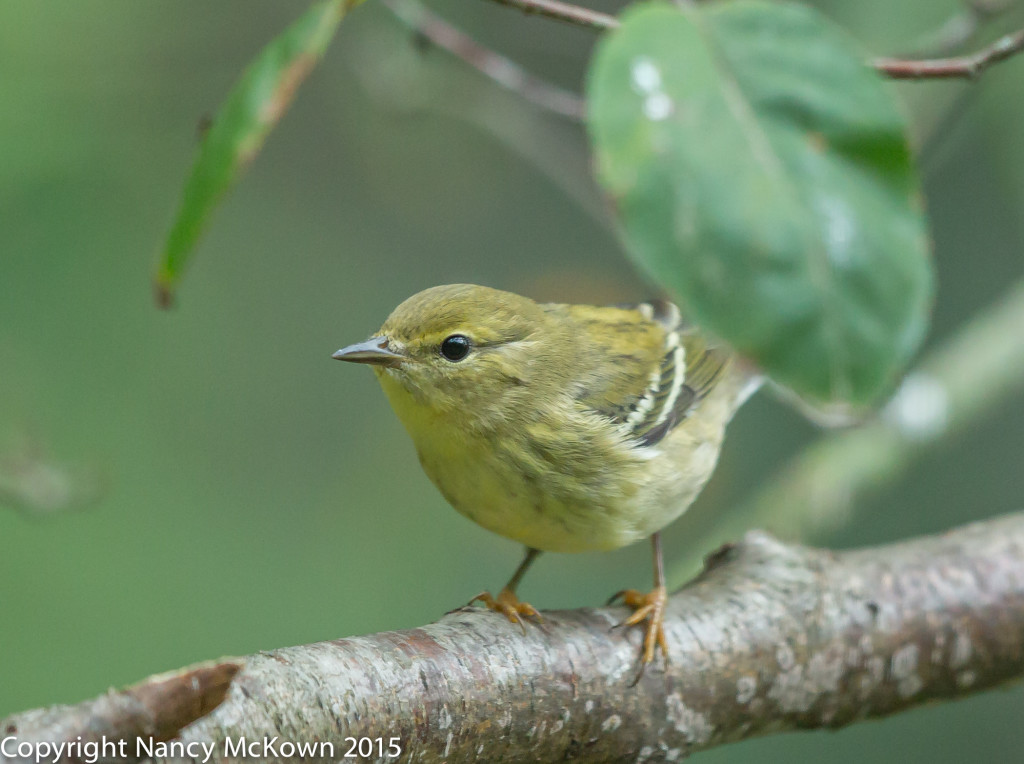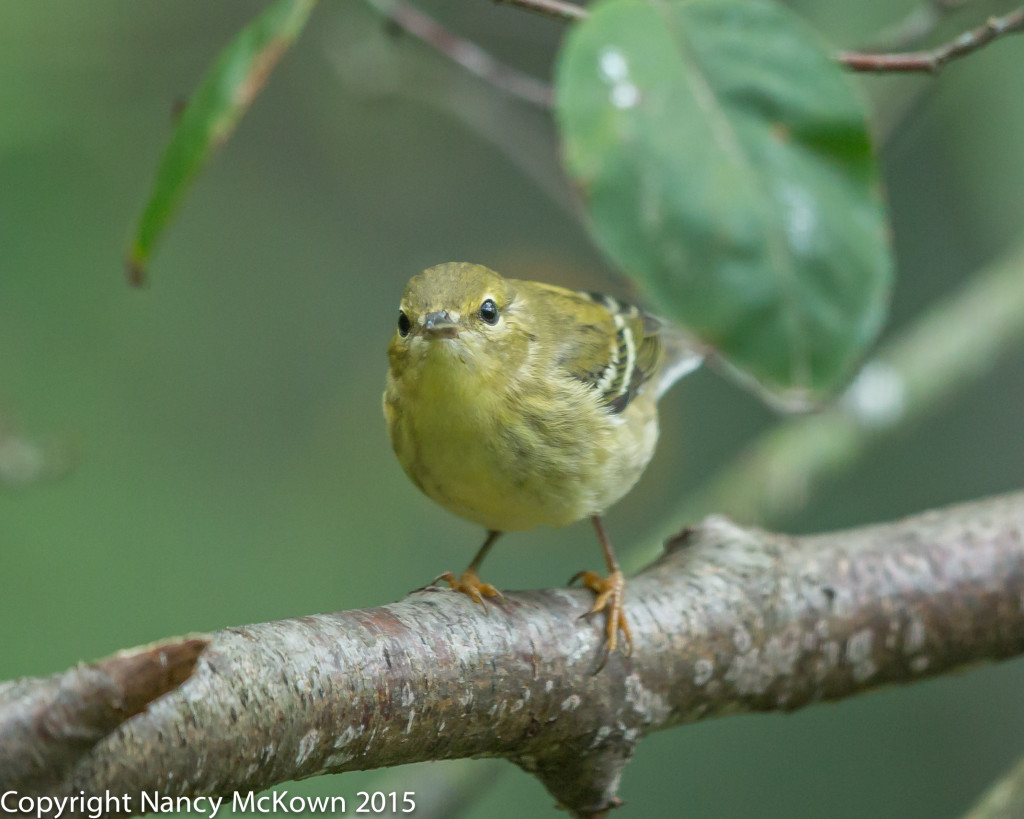Warbler Lover
It’s no secret to people who read this blog that my favorite birds to photograph are warblers. These birds present an exhilarating challenge to find and photograph, especially in the spring when their breeding plumage is resplendent and they have reason to display and sing.
The 38+ species of wood warblers who breed in Eastern North America display a wide variety of color and melodic embellishments; and peculiar names. Though a certain warbler species may be difficult to precisely ID without being fairly close (and for me, accompanied by a confirmation photo) the behaviors marking them as warblers are quite consistent. Tiny, (avg 5″ and less than 10 grams) jittery, purposeful, arboreal birds with broad ranging migratory habits, warblers skitter about on the ground or in dense brush and rarely pose on the perfect photo perch.

ISO1600; f/4; 1/500 Second
Monocular Vision
When I placed my dominant right eye up to the viewfinder eye cup to photograph this Blackpoll Warbler, my left eye automatically shut, effectively blocking out any other birds that may have been outside the center of my one-eyed gaze.
The most obvious reason my left eye closes is that binocular vision only works when both eyes are working together. It is too disorienting when one eye is looking through a long lens showing a limited field of vision and the other is looking without magnification at a much wider field of view.
So, I keep my left eye closed when photographing birds and have honed my skills at transitioning quickly between binocular vision (with overlapping fields of view) to the one-eyed magnified view I see through the viewfinder.

ISO1000; f/4; 1/500 Second
Through-the-Lens Bird Relocation
It is not uncommon for me to spend many frustrating moments trying to re-find a fast moving warbler that I saw with two eyes, but lost once I peered through the lens. I must direct the lens and quickly re-locate that spot while looking through the much narrower field of view of the lens, all in a highly charged instant. If the warbler is bouncing in and out of the viewfinder, and then gets lost in densely packed undergrowth, there is no choice but to lift my head again until I catch sight of it and am able to redirect the lens.
NOTE: With time and lots of practice, my through-the-lens warbler re-location skills have improved.
Blackpoll Warblers
This female (or immature male) Blackpoll Warbler is a new one for me. She is not as distinctive as the male Blackpoll, with his black cap and white cheeks, but lovely none-the-less. As is often the case, I saw only the less colorful bird in my yard. The females or immatures look very similar to the BayBreasted Warblers. I was lucky enough to see them last Fall as well.
This Blackpoll Warbler stayed less than 5 minutes, looked around at all the commotion the other birds were making, and then decided not to play.

ISO1600; f/4; 1/500








